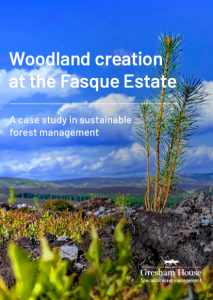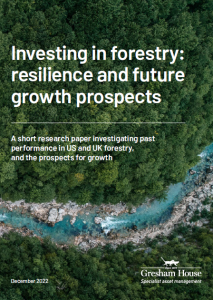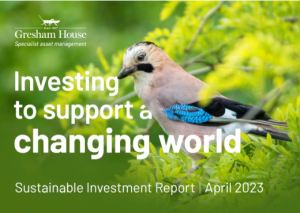April 2023
April 2023
Drawing on our experience and expertise investing in forestry and timber markets around the world, we bring you the latest insights and research.
This edition of our new Forestry CIO newsletter includes a detailed case study of a recent afforestation project, analysis of Ireland as a forestry location, and our most recent white paper on forestry’s resilience as an asset class.
To receive this direct to your inbox ahead of it being published more widely on a quarterly basis, please get in touch.

David Gardner
CIO, Forestry
Investors finding shelter in forestry
Gresham House has been managing sustainable forestry and land investments on behalf of institutions, endowments, family offices and private investors for over 40 years. My own experience spans the past 30 years, with the last three spent as CIO of Forestry here at Gresham House.
As we continue to develop our international footprint, this experience will be critical when assessing the trends that shape capital flows into the asset class.
Over the last few decades, we have seen the steady transfer of forest ownership to – and investment from – the private sector. The asset class has become a mainstay for an investor base demanding the delivery of sustainability outcomes alongside the potential for robust financial returns.
In the last 20 years, we have seen a shift from pure timber production to sustainable forestry management – a far more balanced and holistic approach.
The carbon sequestration potential of well-managed forests and the environmental credentials of timber are now well recognised and continue to drive engagement and investor interest in the asset class.
Additionally, in the last decade, consensus has now broadly aligned on the power of forests to provide a range of ecosystem services to wider society. These are being increasingly monetised under the banner of ‘Natural Capital’.
This has provided a new frontier in the asset class, where we see the potential to unlock value by leveraging the capacity of the underlying land to deliver multiple outcomes.

We believe, based on our own research, that this shift to a focus on Natural Capital
|
2022 saw a markedly different field of play for investors than the preceding decade.
Bull markets and price stability were replaced with volatility across global financial markets and double-digit price growth across developed economies.
Some of us, however, will remember the unfortunate effects of stagflation on financial markets and global capital flows.
While central banks have responded with the tools at their disposal, namely interest rates, it remains clear that we have now entered a period of meaningful inflation in the short to medium term. The new inflationary environment reflects a return to the paradigm of investing for preservation.

Where recent years have seen global capital flows chasing growth, investors are now demanding protection from rising price levels and more resilient asset classes.
Productive forestry investments have historically provided shelter from rising price levels as the raw commodity, timber, holds inflation-hedging properties.
This often-overlooked characteristic is once more becoming a demand driver for the asset class.
How could Forestry as an asset class fare in the current macroeconomic environment?At Gresham House, we remain positive about forestry investment across a number of geographies. Throughout my professional life, I have always endeavoured to look for the trends that will shape the future while maintaining a clear understanding of the past. As Mark Twain purportedly once wrote: ‘History never repeats itself, but it does often rhyme…’ and against this backdrop, there are some compelling
|
Important information
Opinions expressed within this post are the author’s own and not necessarily those of Gresham House. This article is not intended to be relied upon as the basis for an investment decision, and is not, and should not be assumed to be, complete. It is provided for information purposes only.
Any investment is subject to various risks, none of which are outlined herein. All such risks should be carefully considered by prospective investors before they make any investment decision. Prospective investors should seek their own independent financial, tax, legal and other advice before making a decision to invest.
You are not entitled to rely on this email and no responsibility is accepted by Gresham House or any of its directors, officers, partners, members, agents or advisers or any other person for any action taken on the basis of the content of this email.
Certain economic and market information contained herein has been obtained from published sources prepared by third parties and in certain cases has not been updated through the date hereof. While such sources are believed to be reliable, neither Gresham House nor any of its directors, partners, members, officers, or employees assumes any responsibility for the accuracy or completeness of such information. No person, especially those who do not have professional experience in matters relating to investments, must rely on the contents of this document.
Any reference to past or future performance should not be viewed as a reliable indicator of how the investments will perform in the future and there can be no assurance that any targets provided can or will be met. The value of investments may rise or fall, and investors’ capital is at risk. Tax treatment depends on the individual circumstances of each investor and may be subject to change.
 Gresham House
Specialist asset management
Gresham House
Specialist asset management








